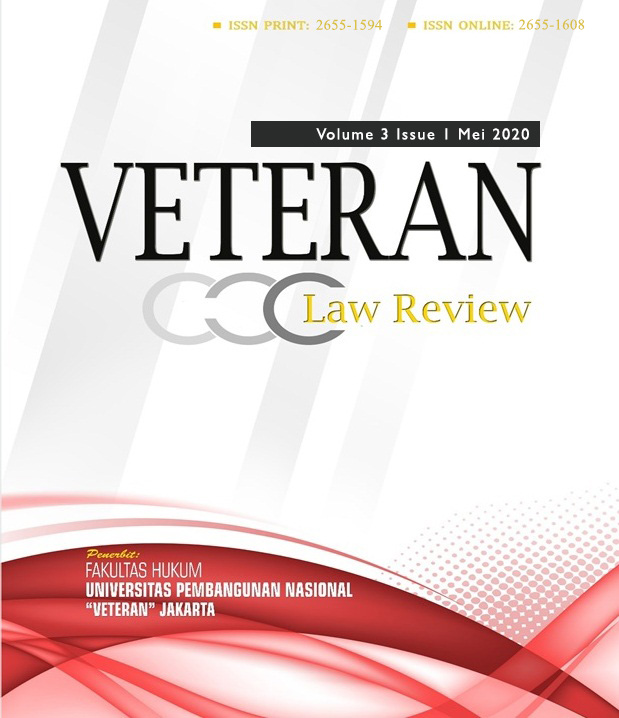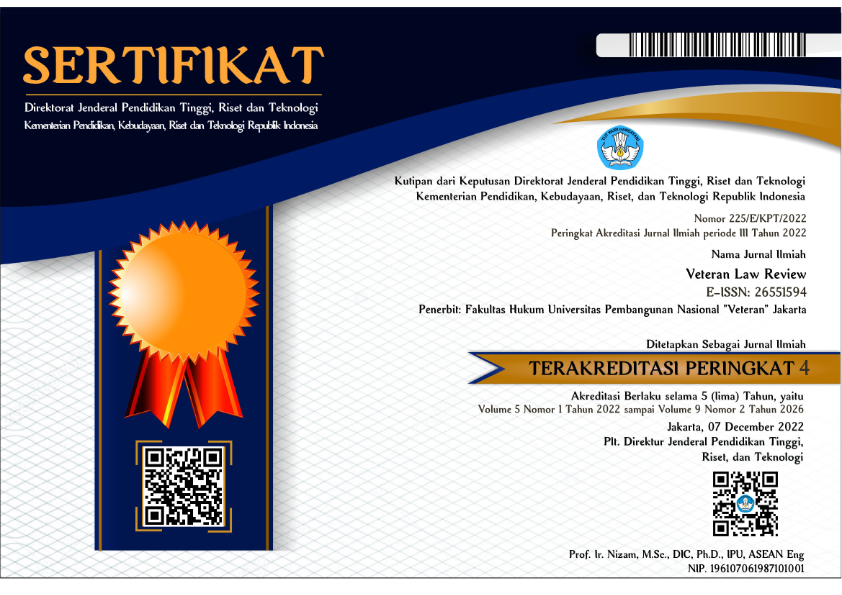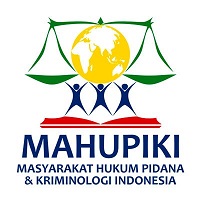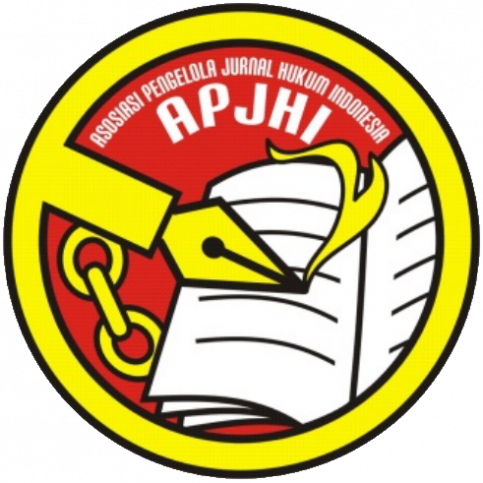Juridical Analysis Of Employee Considerations As Administrative Competition Agency
DOI:
https://doi.org/10.35586/velrev.v3i1.1749Abstract
The Personnel consideration Agencyhas the authority to carry out the administrative appeals process from the reception of the file until it considers, making the decision whether strengthened or scaled or cancelled as per the weight the violation is done in question. The decree is certainly signed by the Chairman and Secretary of BAPEK. This research aims to analyze the administrative appeals to the personnel consideration body as a final step in the administration appeals process, and then see the whole problem solving if there is a arbitrariness Stand out in the allotment of disciplinary penalties as in articles 3 and 4, namely the obligations and prohibitions to be complied with. The source of this research is used with two sources of legal resources, namely the primary legal source, which is the study of interviews to speakers who are competent in implementing the problem of resolving administrative appeals dispute and secondary legal source, namely data Obtained from the literature study by reading, quoting, and studying legislation, documents, books, dictionaries, and other literature relating to the issues to be discussed.Downloads
References
th paragraph Preamble of the 1945 Constitution of the Republic of Indonesia Republic of Indonesia. Explanation of Law Number 8 of 1974 concerning Personnel Principles. Supplement to the State Gazette of the Republic of Indonesia Number 3041.Republic of Indonesia. Government Regulation Number 53 Year 2010 Concerning Discipline of Civil Servants. Republic of Indonesia State Gazette Number 74 of 2010 and Supplement to Republic of Indonesia State Gazette Number 5135.Republic of Indonesia. Government Regulation Number 24 of 2011 concerning Personnel Advisory Board, State Gazette of the Republic of Indonesia of 2011 Number 45 and Supplement to State Gazette of the Republic of Indonesia Number 5210.Republic of Indonesia Law Number 5 Year 2014 Concerning State Civil Apparatus Disciplined Civil Servants, State Gazette of the Republic of Indonesia Year 2014 Number 6 and Supplement to the Republic of Indonesia State Gazette Number 5494.A.E. Manihuruk. Development of Civil Servants in Development. Prisma Number 4. August 1974. Year III.Circularof the Supreme Court of the Republic of Indonesia Number 4 of 2016 concerning the Imposition of the Formulation of the Results of the Plenary Meeting of the 2016 Supreme Court Room as a Guide to Implementing Duties for the Court.C.S.T Kansil. Introduction to Indonesian Law and Legal Studies. Publisher: PN Balai Pustaka.Jonaedi Efendi, Dr. Ismu Gunadi Widodo, and Fifit Fitri Lutfianingsih, Dictionary of Popular Legal Terms. Publisher: Prenadamedia Group. 2016H. Nainggolan. Development of Civil Servants. 4th printing. BAKN. 1983.Pandu Wibowo M.E. New Bureaucracy Designer Welcomes Millennial ASN Wave in Bureaucracy. Publisher: Phoenix Publisher. 2019.Sovia Hasanah, Flow of State Administration Dispute Settlement. 2016. Quoted from: www.hukumonline.com.Sondang P. Siagian. Administrative Philosophy. Seventh printing. PT. Holy mountain. Jakarta: 1974.
Downloads
Published
How to Cite
Issue
Section
License
Copyright (c) 2022 Veteran Law Review Journal
Veteran Law Review © 2022 by Faculty of Law Universitas Pembangunan Nasional "Veteran" Jakarta is licensed under Creative Commons Attribution 4.0 International

1. License
The non-commercial use of the article will be governed by the Creative Commons Attribution license as currently displayed on Creative Commons Attribution 4.0 International.
2. Author(s)' Warranties
The author warrants that the article is original, written by the stated author(s), has not been published before, contains no unlawful statements, does not infringe the rights of others, is subject to copyright that is vested exclusively in the author, and free of any third party rights, and that any necessary written permissions to quote from other sources have been obtained by the author(s).
3. User/Public Rights
VELREV's spirit is to disseminate articles published are as free as possible. Under the Creative Commons Attribution-ShareAlike 4.0 International License. VELREV permits users to copy, distribute, display, and perform the work for non-commercial purposes only. Users will also need to attribute authors and VELREV to distributing works in the journal and other media of publications.
4. Rights of Authors
Authors retain all their rights to the published works, such as (but not limited to) the following rights;
- Reproduce the work
- Prepare derivative works based upon the work
- Distribute copies of the work
- Perform the work publicly
- Display the work publicly
- Copyright and other proprietary rights relating to the article, such as patent rights,
- The right to self-archive the article,
- The right to enter into separate, additional contractual arrangements for the non-exclusive distribution of the article's published version (e.g., post it to an institutional repository or publish it in a book), with an acknowledgement of its initial publication in this journal (Veteran Law Review).
5. Co-Authorship
If the article was jointly prepared by more than one author, any author submitting the manuscript warrants that he/she has been authorized by all co-authors to be agreed on this copyright and license notice (agreement) on their behalf, and agrees to inform his/her co-authors of the terms of this policy. VELREV will not be held liable for anything that may arise due to the author's internal dispute. VELREV will only communicate with the corresponding author.
6. Royalties
Being an open accessed journal and disseminating articles for free under the Creative Commons license term mentioned, author(s) are aware that VELREV entitles the author(s) to no royalties or other fees.
7. Miscellaneous
VELREV will publish the article (or have it published) in the journal if the article’s editorial process is successfully completed. JOSI's editors may modify the article to a style of punctuation, spelling, capitalization, referencing, and usage that deems appropriate. The author acknowledges that the article may be published so that it will be publicly accessible and such access will be free of charge for the readers as mentioned in point 3.


















